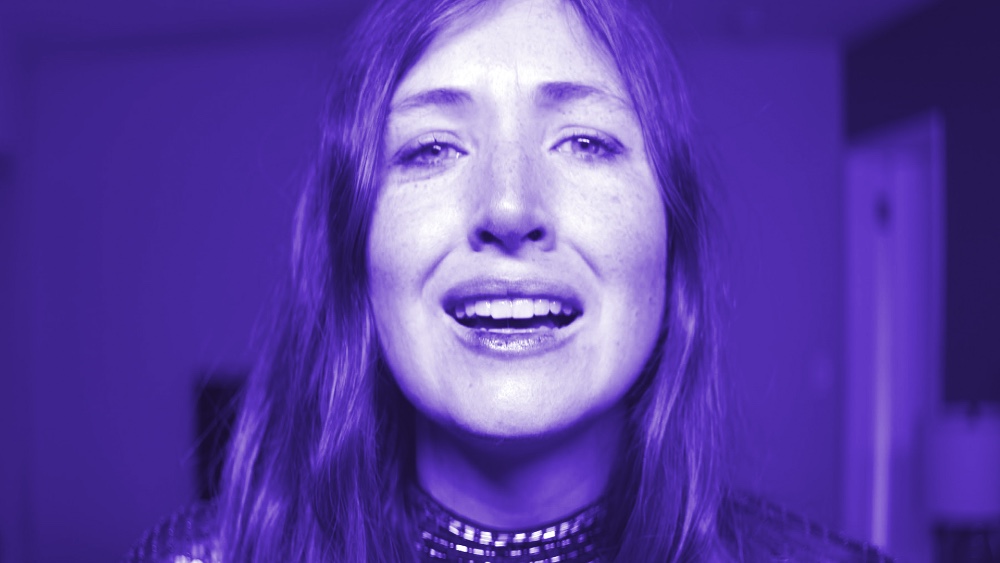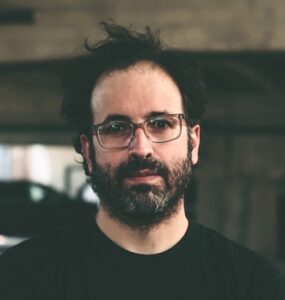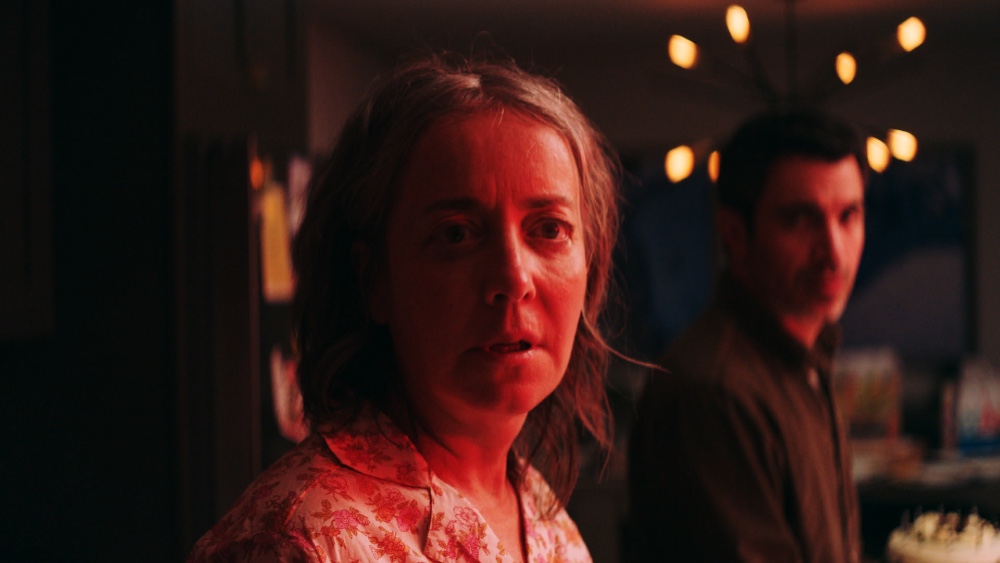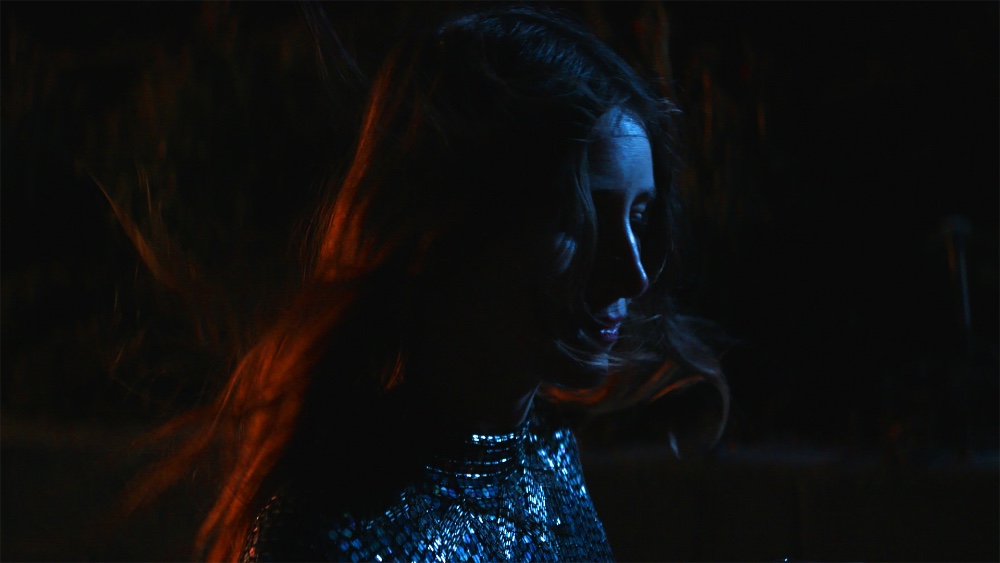
Amy Seimetz’s She Dies Tomorrow is about Amy, as played by Kate Lyn Sheil, who has a sudden strange feeling that she’s going to die the following day. As she battles to come to grips with this realization, that feeling soon begins to spread among her loved ones and around the town. Filled with hallucinatory imagery and the feeling of impending doom, the film takes viewers on a journey that accidentally simulates the internal journey many have undergone during the course of the COVID-19 pandemic.
It’s a film that showcases a masterful performance from its cast, particularly from Sheil and co-star Jane Adams. However, visually capturing the mounting hysteria and rollercoaster emotions that each individual character undergoes over the course of the film posed its own set of challenges. Knowing the critical eye she would need, Seimetz reached out to Cinematographer Jay Keitel, who has been a frequent collaborator with the director and knew he would be able to capture the visual imagery required for the ambitious feature.
Keitel’s collaborative relationship with Seimetz began with her 2012 feature film debut, Sun Don’t Shine, and has carried over into their work on the series, The Girlfriend Experience. His visual footprint in She Dies Tomorrow, full of hallucinatory imagery and a fusion of colors, has acquired him a recent nomination for an Independent Spirits Award for Best Cinematography.
Below the Line recently spoke on the phone with Keitel for the following interview, where we discussed the evolution of his working relationship with Seimetz, how this project allowed him to experiment with different lenses, and more.

Below the Line: To start things off, you’ve worked with Director Amy Seimetz a fair amount since Sun Don’t Shine. How has your working relationship changed and evolved over the years?
Jay Keitel: I would say it hasn’t changed that much from when I first started working with her. We met back, I think, in 2003. When we first started working, we both had some sympatico together. Our relationship really hasn’t changed working together at all that much, from Sun Don’t Shine to The Girlfriend Experience to She Dies Tomorrow. We seem to connect on some creative level and it’s very fulfilling actually — special director/DoP relationships.
BTL: It definitely seems you guys had a great working chemistry while I was watching the film. I assume it was a very collaborative process figuring out how to frame the shots to the lighting and everything else.
Keitel: Right. I would say one thing that’s kind of interesting about the way we work is Amy always calls me when she has an idea. So I’m sort of brought in very early on when she starts writing, and she’ll give me some sort of prompt, or, you know, a couple sentences of her thoughts and let me go and percolate on that for a while and do tests and think on it. Then I come back and present her with some ideas. And, at that stage, she’s, you know, she’s written a little bit more, and then I can give her things. And then she can give me more ideas. It’s a kind of unique, but really creatively fulfilling way to work.
BTL: Was that back and forth how you guys came about using LED lights in the more emotionally heightened scenes?
Keitel: Yeah, I think so. I mean, that and also the costs and that basically we had her house as the location. We didn’t have a big crew and I think that LED came out of ease of use, low wattage, and we didn’t need a co-plan for anything. But also, it really gave us versatility in the kind of light and the color-uses very quickly on set with a small crew. Like oftentimes, it was in the room with just me, Kate [Brokaw, Editor] and Amy, and I was able to very easily manipulate a lot of the lights. And LED gave us that opportunity.
BTL: Were you guys able to figure out a way to randomize lights, because I know sometimes you can pre-program the lights to do a certain sequence of colors.
Keitel: Yeah, we started doing tests and experiments in our garage actually. On a micro level, shooting a bunch of plants and fungus and things like that in a macro world. And we were able to test out these different timings of multiple units and arrive at some select that we really love. And then those, eventually, were incorporated into this, sort of, the showpiece of the movie, which is like a montage that sort of escalates when everyone’s infected. All of the characters sort of get infected and the color montage, those experiments and all the different uses of the unit, and the timing came together. And each character has their own sort of timing based on who they were and what they were feeling. Kate had her own sort of timing with her lighting setup, and Jane and Katie [Aselton, another actor] had theirs as well.

BTL: That answers a question I had regarding the elements under the microscope. Was that stock footage or did you shoot it yourself?
Keitel: No, we shot all of that ourselves. We have many hours of, which Amy jokes, that we possibly could put on Stockfootage.com. But we had so many hours of footage the editor could pull from. Kate [Brokaw, Editor] did a great job at selecting. But we had a lot of outlandish stuff, microscope footage, and macro stuff that we shot in the garage. All along the way over a period of time.
BTL: I’m not trained in camera work at all, but it seemed like there were a lot of lenses used throughout the course of the film. What lenses did you use during filming because I’m sure to get the micro images you needed a different lens, obviously, compared to the more pulled out scenes?
Keitel: Exactly. I actually used the 500mm Reflex Mirror Leica lens with diopters or the microscope footage. And we used 1000mm lens for the dune buggy scene and sunset/sunrise type millimeter lens for the dune buggy scene and sunset/sunrise type shots, which was with a 75 lb. lens from Clairmont and then I used some the rehoused Russian lenses from a company called Richard Gale. They’re called Clavius lenses for about half the movie and then, from the middle section to the end, we used Arri Ultra Prime. At the very end, we used some Angénieux Optimo zoom. So a wide gamut flowing in from the very beginning, which is sort of grainy and has more of a texture to the end, which is sharper, and a little bit more refined. I think we wanted to do that to sort of push the emotion along, because Kate, Jane, and all the characters really have these really emotional, really grand emotional arcs. You know, their fear, anxiety, release and acceptance at the end. I think that helps with that.
BTL: That was way more than I thought you had used, so I’m proud that I recognized it, but also wow.
Keitel: We don’t normally do that, but every story is different. I don’t like to apply the same rules to every story. The story calls for that. I’ve shot movies with just one lens. Our previous outing, we were very specific, especially on a TV show, about the consistency of the lenses across all the episodes. But here, I think it really lends itself to the story.
BTL: And you essentially got to play around a bit. It was like a playground in a way.
Keitel: Quite a lot and that’s something really special. Specifically, working with Amy, we do have that element of play involved.
BTL: There’s one scene with Kate Lyn Sheil’s character, where she’s outside and the wind is sweeping the leaves up and her hair is almost floating around her. That’s probably my favorite shot in the film, but I wanted to know how that was accomplished. At some points, I thought it was filmed in reverse. I just need to know.
Keitel: That was actually a C300 Mark II with the Clavius lenses. I had two lights, one on each side of Kate, and then we shot in slow motion. I’m not sure if that was handheld, probably on a tripod. Some of the handheld stuff was with the weedblower. But yeah, that was at night, a very simple setup. Really, really fun evening, actually, in Amy’s backyard.
BTL: In terms of all the scenes that you had to shoot, which one was the most logistically challenging and why?
Keitel: I would say the birthday party scene was the tough one in the movie, because we have five characters, and basically a white box. Every character has to have their own shot and multiple shots looking through each other. And we wanted to have that compressed feeling. But again, we shot with two cameras in that scene, and it was very tight in the room, you know, extremely difficult to sort of massage everything. But I would say that was the most challenging scene.
BTL: This film was supposed to have its world premiere at SXSW last year before COVID changed everything. I wanted to ask you if the pandemic changed how you plan on approaching cinematography in shooting segments and how you plan on shooting things – overall – in the future?
Keitel: From my process point of view, it doesn’t change at all as far as pre-production, with the exception of thinking about crew size and safety. But I can say everything I’ve shot, basically since February of 2020 has been smaller. Crew members are scattered farther apart, and when thinking about how you’re going to shoot something, it definitely affects that, in how people are in contact with one another. In my experience, it takes longer to shoot basically the same amount of screen time on the ground that takes longer. I love my crew, and I’m very thankful and fortunate to work with such great people. And safety is, I think, a priority for me, especially now. I have to be more methodical about that. So, definitely. Definitely the shooting has changed. The pre-production, not so much.
She Dies Tomorrow is now streaming on Hulu. All pictures courtesy of NEON.






